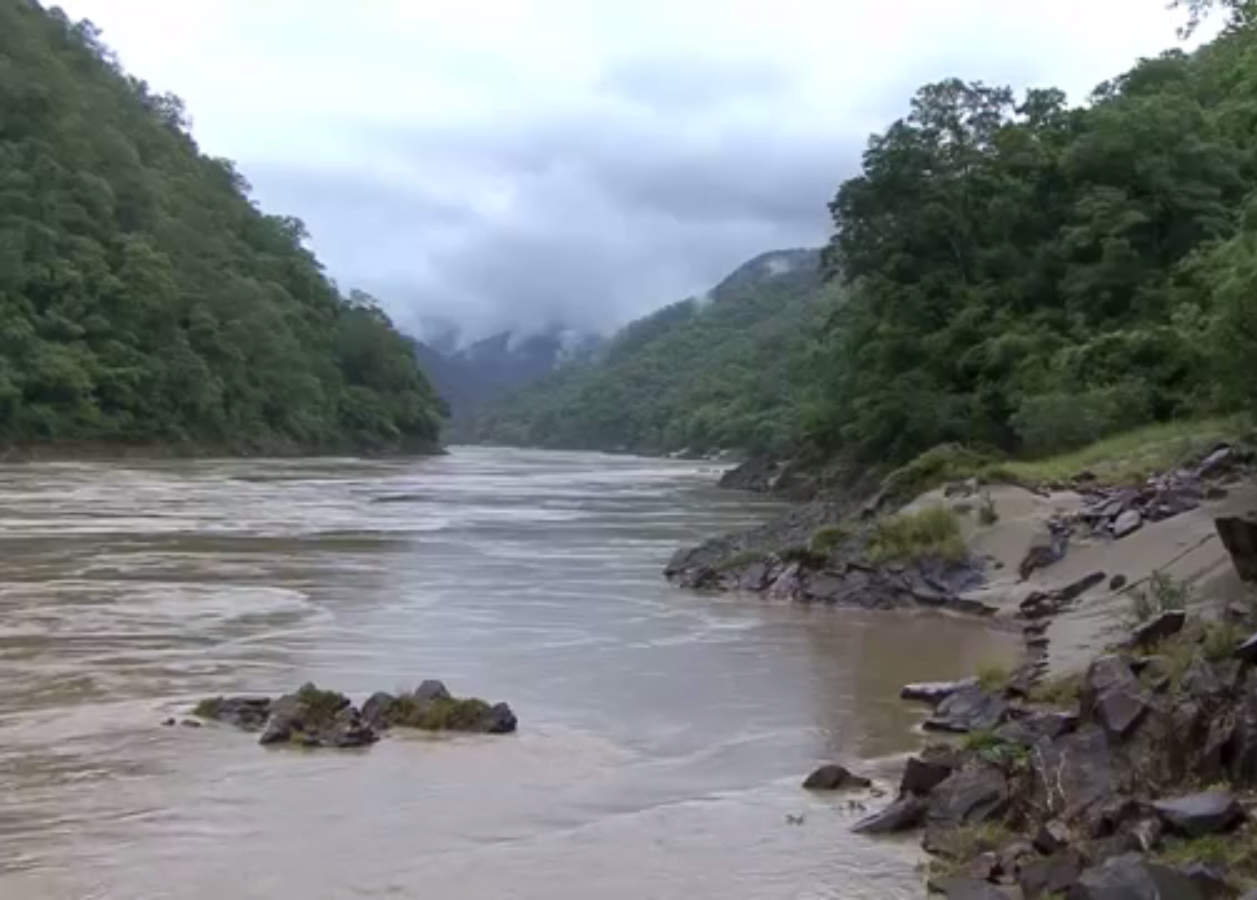A proposed hydropower dam on the Salween River continues to be assessed for development, despite community criticism in Shan State.
The 1,200-megawatt Naung Pha dam project, located between the towns of Lashio and Hopang in the northern part of the state, was previously suspended by the state government pending a review of its costs and benefits.
However, DVB has obtained a statement from Australia’s Snowy Mountains Engineering Corporation (SMEC), the organisation appointed to conduct the Environmental and Social Impact Assessment (ESIA) for the proposed Naung Pha Hydropower Project, confirming that they are currently conducting the assessment.
“SMEC has been allowed access to the project study site from both sides of the Thanlwin [Salween] River to carry out data collection and consultation,” said an SMEC representative.
The company representative told DVB in an email response that “SMEC operates under the principle that any people who may be affected by the project deserve the opportunity to engage in the public consultation process in a fair a participative manner.” They said they are aware of the opposition to hydropower development and will have a “a focus on all stakeholders who may be impacted as a result of the project.”
However, Charm Tong, a spokesperson for Action for Shan State Rivers, an environmental group opposed to the project, says the consultation process has not been publicly announced.
“There has been nothing fair or participatory about the plans to build the Naung Pha dam so far,” said Charm Tong, speaking to DVB on Wednesday. “No decision can be made about dams on the Salween until there is peace and a federal settlement giving ethnic people the right to decide over resources in their areas. SMEC has been hired to rubber stamp an unfair process.”
Under an agreement signed in December 2009 by Burma’s former military rulers, the planned hydropower dam would export 90 percent of the electricity it generates to China. The project is backed by the Chinese state-owned Hydrochina Corporation and a local consortium called the International Group of Entrepreneurs.
“We heard from local people that they were conducting an ESIA for the Naung Pha dam, and also we saw this on the company website. But they did not announce the ESIA publicly like last year, when they carried out the ESIA for the Mong Ton dam, because this led to a lot of public protests. They have deliberately tried to avoid public attention on their ESIA this year,” said Charm Tong.
A statement released last month by the Committee for Shan State Unity (CSSU), a coalition of Shan political parties and armed groups, criticised preparations to go ahead with six proposed dams on the Salween — the Kunlong, Naung Pha,Ta-Hsang, Mong Ton, Ywathit and Hatgyi dams — despite the concerns of local people.
“Disputes over ownership, use and benefit sharing from natural resources are one of the main sources of conflict. Until there is a negotiated settlement of this issue, moving ahead with these large projects will fuel conflict,” the CSSU said in its statement.
The statement also highlighted worries about the increased risk of natural disasters posed by the dams: “The dams planned on the Salween (Nu) River in Yunnan Province of China have been suspended by the Chinese government due to the fact they lie on an earthquake fault line.”
The CSSU also noted that only the Chinese stand to profit from the dams as they are now planned, while local communities would see little or no benefit if they are built. “Now, the Chinese government is trying to get the chance to build dams on the Salween in Myanmar [Burma] in order to fulfill its own electricity needs,” the group said in its statement.
Action for Shan State Rivers, meanwhile, expressed concerned about the impact of the dams on the river’s health: “Any dam on the Salween River would block its natural flow and have huge impacts on the ecology and communities depending on the river,” said Charm Tong.
“We want the river to remain flowing freely,” she added.
[related]
Despite SMEC continuing with its assessment, this does not necessarily mean the Naung Pha dam will definitely go ahead.
“SMEC’s contract and remuneration is not dependent on the approval of the project. This decision will be made by the government of Myanmar, based on various considerations, including political, financial, technical environmental and social factors,” explained the SMEC representative reached by DVB.
Community groups have remained unchanged in their opposition against the dam and continue their calls to drop all plans to develop it.



